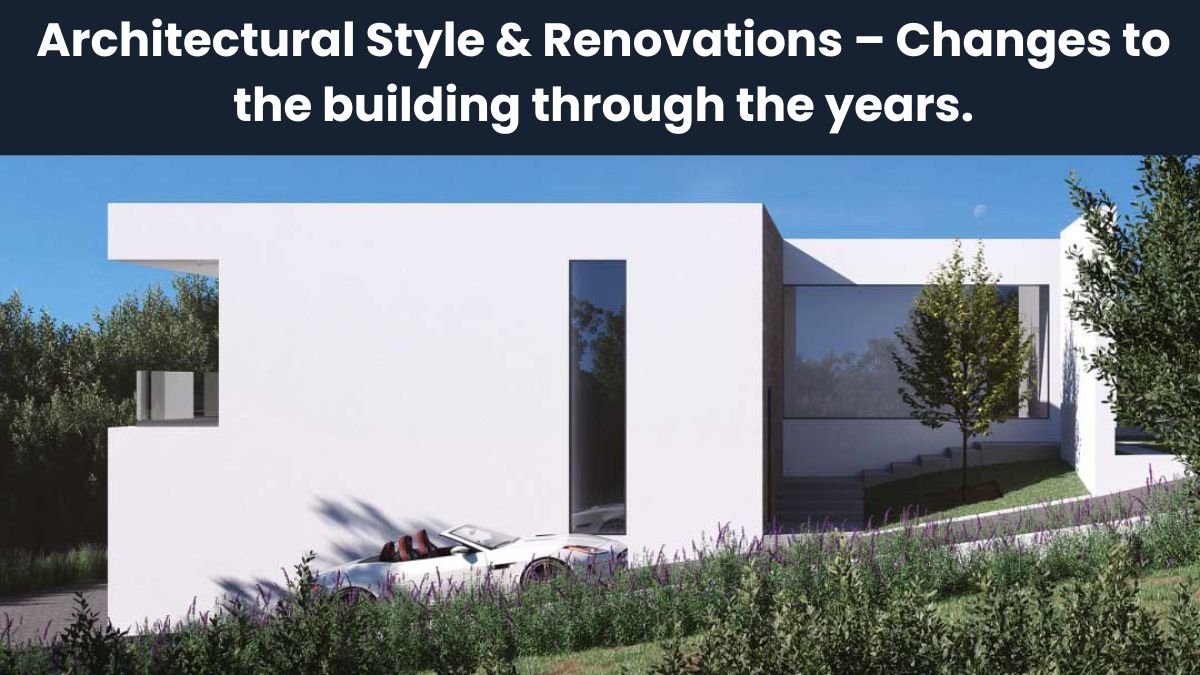In today’s time, when the environmental Architectural crisis is standing before us as a serious challenge, architecture is not limited to just beauty and strength. Now it has taken the form of a profound social and environmental responsibility. This is the reason why “Sustainable Architecture” is being discussed all over the world. This article will tell you in detail about the design of buildings, the changes in them over time, and the innovations that not only save energy but also ensure a better and greener environment for future generations.
What is a Sustainable Architecture?
Sustainable architecture is one of the design regimes that targets to generate sustainable and long-life buildings, least affecting the environment as they utilize the natural resources carefully. In this process, the construction material and energy consumption is taken care of but all the activities involved in the life of such a building course of its construction, usage then destruction or recycling each bit is considered.
The Changing Face of Architecture: Changes Over the Decades
Every building has a history – there was a time when it was built, then changes were made over time, sometimes completely changing its form. This process can range from “renovation” to “modernization”.
In most states across the world including India old structures are being re-invented with the use of building material instead of being pulled down. Look at the example of the new Terminal 2 on Kempegowda International Airport in Bengaluru. The terminal presented by architecture company SOM is the ideal representation of modern technologies, sustainable materials such as bamboo, and the look that creates the picture of the garden city.
Urban Sequoia: The Carbon-Negative Building of the Future
The Urban Sequoia model is a revolutionary idea of Skidmore, Owings & Merrill (SOM) that has been turned into reality and this is one giant step towards the realization of carbon-negative buildings. Through this model, it has been established that when such buildings will be designed in such a way, it will be in a position to uptake carbon in the air thus reducing the implication on the environment; not only will this have reduced implication of the buildings on the environment, but also, it will help address the issue of global warming.
Key Principles of Sustainability in Architecture
- Use of Local Materials: The transportation process produces carbon emissions, and the available materials are used locally, which promotes local customs as well as cultural preservation.
- Energy Efficiency: Such principles, as the Passivhaus, and intelligent ventilation strategies can help to reduce the amount of energy consumed by the buildings.
- Conservation of natural resources: The construction of buildings should be on such a manner in which they are able to collect the maximum amount of natural light, air and rainwater.
- Health and wellbeing: While selecting materials, it is important to see that they are free from any kind of toxic elements and are safe for human health.
Future vision: Longevity and usefulness of the building
The goal of sustainable architecture is not just to build new buildings. What is also important is how many years the building can remain effective and useful once it is constructed. If the building can be easily changed or upgraded in the future, it can prove to be useful for a longer time.
Apartamento Paraíso, an old building located in São Paulo, Brazil, is a perfect example of this. Designed by Rúina Studio, this project not only transformed the old apartment beautifully, but also made excellent use of recyclable materials.
Reusability and Survivability Aspect of Design
Many projects today are being built in a way that can be easily dismantled, relocated or reused. This increases the life cycle of building materials and reduces waste. For example, some materials can be salvaged from old buildings and reused in new buildings, saving resources.
Social Aspect of Architecture: Inclusivity and Accessibility
Buildings are not just structures of bricks, stones and steel – they are the foundation of human life. Hence, their design should also be socially appropriate. It is architecture’s social responsibility to make them accessible to the elderly, differently-abled, children, and diverse communities.
If a building is designed keeping in mind inclusiveness, flexibility and changing user needs, it will not only be environmentally friendly but also socially sustainable.
Conclusion:
Architecture in the 21st century is not just about beautiful and strong buildings, but it has become a medium to realize the dream of a better world for society, environment and future generations through buildings.
Whether it is innovative concepts like Urban Sequoia, or the green design of Kempegowda Airport, or the simple but profound redesign of an apartment in São Paulo – each example proves that if we want, we can make our cities and lifestyles not only beautiful, but also in harmony with the Earth.
